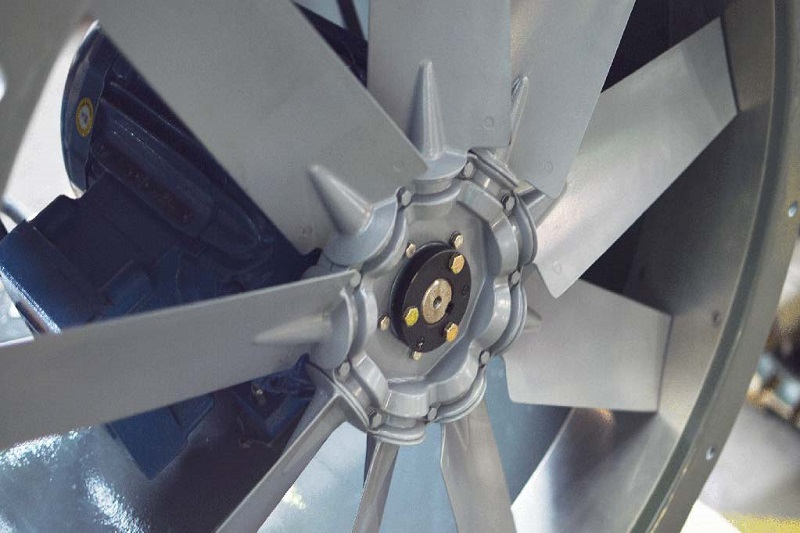
Introduction
High temperature fans are essential components in various industrial applications that involve extreme heat, such as furnaces, kilns, and ovens. They play a crucial role in ensuring proper ventilation, air circulation, and temperature control. However, like any other equipment, high temperature fans have their advantages and disadvantages. In this comprehensive guide, we will explore the pros and cons of high temperature fans, helping you make an informed decision when selecting the right fan for your specific needs.
Fan Efficiency
Pros: – High temperature fans are designed to operate efficiently in extreme heat conditions. They can maintain their performance even when exposed to temperatures up to 1000°F (538°C), making them suitable for various industrial applications.
– The use of high temperature fans can result in energy savings, as they can effectively dissipate heat and maintain a consistent temperature within the system. This can help reduce the energy consumption of cooling systems and other auxiliary equipment.
Cons: – High temperature fans can be less energy-efficient compared to standard fans when used in applications with lower temperature requirements. This is because high temperature fans are specifically designed for extreme heat conditions and may consume more power than necessary in less demanding environments.
Fan Lifespan
Pros: – High temperature fans are built to withstand harsh conditions, making them more durable and long-lasting compared to standard fans. They often feature robust materials and construction techniques, such as heavy-duty bearings, reinforced casings, and heat-resistant coatings, which contribute to their extended lifespan.
Cons: – Despite their durability, high temperature fans may still experience wear and tear over time, especially when exposed to extreme heat for prolonged periods. This can result in a shorter lifespan compared to standard fans when used in less demanding applications.
Fan Performance
Pros: – High temperature fans are engineered to deliver optimal performance in extreme heat environments. They can efficiently move large volumes of air and maintain consistent air pressure, ensuring proper ventilation and air circulation in industrial processes.
– The use of high temperature fans can help prevent equipment overheating and system failures, which can lead to costly downtime and repairs.
Cons: – High temperature fans may not perform as well in applications with fluctuating or lower temperature requirements. They are specifically designed for high heat environments and may not be as versatile as standard fans in terms of performance.

Fan Maintenance
Pros: – High temperature fans typically require less maintenance compared to standard fans, as they are built to withstand harsh conditions. This can result in lower maintenance costs and less downtime for repairs and replacements.
Cons: – While high temperature fans may require less maintenance overall, they may still need regular inspections and cleaning to ensure optimal performance. Additionally, specialized maintenance may be necessary for certain components, such as heat-resistant coatings and heavy-duty bearings, which can be more expensive compared to standard fan maintenance.
Fan Noise
Pros: – High temperature fans are often designed with noise reduction features, such as sound-dampening materials and vibration isolation mounts, to minimize noise levels during operation. This can result in a quieter working environment and reduced noise pollution.
Cons: – Despite noise reduction features, high temperature fans may still produce higher noise levels compared to standard fans, especially when operating at full capacity. This can be a concern in environments where noise regulations and worker comfort are critical factors.
Fan Safety
Pros: – High temperature fans are designed with safety features to prevent accidents and injuries. These may include thermal overload protection, which shuts down the fan if it overheats, and spark-resistant construction to minimize the risk of fire or explosion.
Cons: – The use of high temperature fans may pose certain safety risks, such as burns or injuries from hot surfaces. Proper safety precautions, such as protective gear and training, should be implemented to minimize these risks.
Conclusion
High temperature fans offer numerous benefits in terms of efficiency, performance, and durability, making them ideal for various industrial applications involving extreme heat. However, they may not be the best choice for every situation, as they can be less energy-efficient, versatile, and quiet compared to standard fans. It’s essential to carefully consider the specific requirements of your application and weigh the pros and cons of high temperature fans before making a decision. By doing so, you can ensure that you select the right fan for your needs, optimizing performance, safety, and cost-effectiveness.

